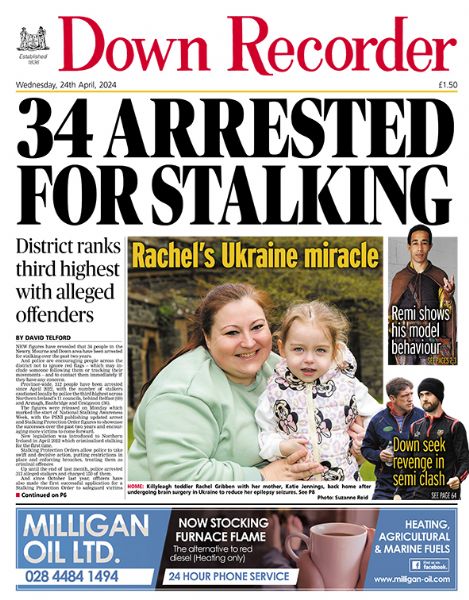Rare Roman treasure is found in Murlough
Rare Roman treasure is found in Murlough
17 June 2015
TWO Roman rings and a silver belt buckle found at one of the district’s most popular beaches have been declared treasure trove by a coroner in Belfast.
The items were discovered by Brian Murray using a metal detector at Murlough beach in Dundrum Bay and he was in court last week to hear the decision. The rings and bracelet have described as “extremely important” and are rare Roman artefacts in the context of Irish history.
The items will now be sent to the British Museum in London for further examination and valuation and Mr Murray will receive 50 per cent of their value. The buckle is similar to those found in Britain dating to the 4th century AD.
Last week’s treasure trove inquest was ordered to establish the circumstances around how the artefacts were discovered. To be classified as treasure, objects must be at least 300 years old and have a metallic content of at least 10 per cent.
Mr Murray said he discovered the items within five minutes and within an area of one square metre.
“I was actually collecting militaria on the shores of Murlough as it was an American training area during the second World War,” he said. “I found the small ring first and within five minutes retrieved the other big ring and the buckle,” admitting the items were the “most valuable” he had ever detected.
Mr Murray said he knew he had found something “sensational” explaining he is a big fan of the Time Team television programme.
“It’s like fishing for mackerel and catching a salmon. It’s not about the money, it’s about the thrill of finding what I did. It was the last thing I expected to find when I went down to the bay,” he added.
Dr Greer Ramsey, an expert from the National Museums of Northern Ireland, said it was possible the items had all belonged to the same person.
“Roman material is incredibly rare, so this makes this hoard of special significance,” he said. “Most of the other finds of Roman material do occur along the east coast, so you image they were trade contacts or perhaps even settlers or people who were shipwrecked and washed ashore.”
Dr Ramsey added: “It is possible that it belonged to a burial and someone was buried at sea. It is equally possible that somebody was wearing it when their ship went down. This is putting the north-east of Ireland on the Roman map.”

